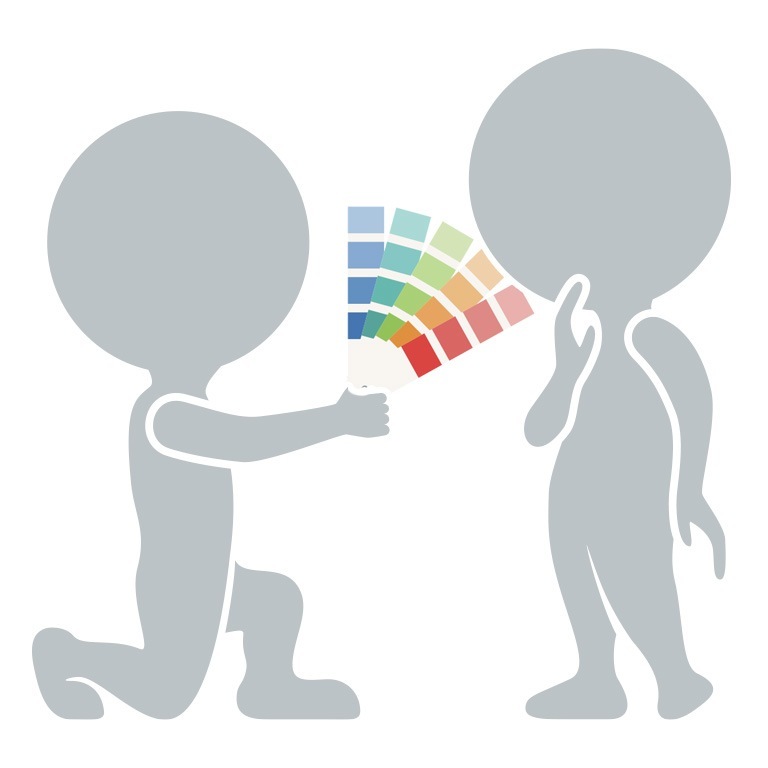My wife sent me a copy of an article appearing in the 05/30/06 online edition of CNN.com about ticket prices at amusement parks. It seems that one of the largest parks, Cedar Point, is bucking the industry trend and actually lowering ticket prices by $5.00 for adults. Additionally, they are cutting the price on one of their highest profit margin concession items by lowering the price of cotton candy from $3.00 a stick to only twenty-five cents…
This comes at a time when other major amusement parks are continuing a sharp increase in admission, as much as 18% this season. Another point the article touches on is the aspect of consumer experience. One amusement park executive that manages a park which implemented free soft drinks was quoted as saying the move to discount prices for cotton candy will impress parents. He went on to make a simple, yet fundamental point that applies as much to orchestras as it does to amusement parks, "Our business is driven by positive experiences."
Of course, what makes the dip in price such a topic for worthwhile scrutiny is that amusement parks are beginning to experience the same sort of dip in attendance that orchestras have been experiencing for the past decade. Traditionally, the amusement park industry has seen steady growth in attendance numbers and up until recent times, skyrocketing admission prices hasn’t been much of a deterrent.
Of course, the price of orchestra concerts has been a long running topic here but it seems that even the American Symphony Orchestra League has finally determined that perhaps it’s an issue worth examining. At the League’s conference (going on right now) they have a session planned for today entitled "The Price Is Right. Or Is It?"
At first glance, I was pleased to see the topic on the agenda, but after the session description’s first sentence I realized that the League likely doesn’t get it. The description reads as follows:
"As the cost of doing business escalates, should ticket prices keep pace? How to offer a range of price points so that live symphonic music remains available to anyone who is interested? Is cost a factor when music lovers select concerts? The League shares the latest research on pricing, attendance, and revenue as well as new approaches to ticket pricing."
I’m going to go out on a limb here and predict that much of the discussion will focus on whether or not the experience is worth the cost and how orchestras can chop up their seating into several dozen price points (best known as scaling the house) to get the most revenue possible.
Then they’ll talk about how the highest price tickets always sell because there’s always buyers for those anyway as these people usually perceive the purchase as a form of donation anyway. After that they’ll talk about trying to find ways to keep the lowest cost ticket prices where they are or maybe even lowering them but the middle priced tickets will continue to go up in price, keeping the average prices well above where they should be.
They’ll likely cover how orchestras can make it seem like they’re offering more lower cost tickets by focusing media attention on the bottom price tickets and rush ticket programs while also glossing over facts of purchasing restrictions and limited availability. In the end, I bet it will be a fairly benign conversation which ignores the fact that across the board, orchestra ticket prices are one of the leading factors keeping people away from the concert hall.
Instead of talking about "new approaches to ticket pricing" they should be talking about the fact that eventually, the increase in cost to present orchestra concerts will outstrip any ability to earn more than 30% of revenue from earned income. As such, orchestras should be initiating capital campaigns –right now– designed to subsidize ticket revenue with income revenue.
How do I know ticket prices are one of the leading causes for a decline in attendance? You’ll have to wait a bit until the middle of June where I have an article planned which examines that issue in detail.
Regardless, it will be interesting to hear what actually transpires at the League’s session. Given the fact that the session isn’t until this afternoon (Pacific Time) that gives plenty of leeway between when this article goes live and the beginning of the session.*
In the meantime, go back to the article at CNN.com and notice that ticket sales are being determined by spur of the moment planning as people no longer prepare their activities far in advance. As such, the article reports that many parks are focusing on flexible pricing structures and making the attendance experience much easier and as hassle free as possible.
What used to be a PITA for the customer is now the PITA for park staffers as they work at streamlining the entire process of attending the park (right down to lodging and shuttle service). It will be fun to watch this summer’s amusement park season for to see if the changes in pricing and customer experience focused efforts have a noticeable impact on revenue and attendance.
*And for all of the folks out there who are wondering (beyond the several dozen that have already written in asking me about it); no, I am not at the League conference this year. Next year the conference is in Nashville so maybe I’ll make it there.



Drew, well written. My experience in ticket prices deals with what the higher ups like to call “Market Values”, which means nothing more than is the customer paying the right price for what they are receiving.
What I want to ask all the Marketing experts out there is this — do you want to sell (1) $100 ticket because that is market value or would you prefer to sell (100) $1 tickets? Same amount of income, more people in seats. Getting people in the seats isn’t an issue in the larger orchestras, but for some of the smaller ones, this is a real problem.
As we all know, this is nothing but supply and demand. Many smaller orchestras are doing very well, but there are some that are having trouble filling seats. And some orchestras went out of business because……..they didn’t fill the seats, hence no support.
For me, I would rather create the demand before raising ticket prices.
While no one expects orchestras not to require admission fees to their concerts, the trend of encouraging participation in the arts by lowering or eliminating fees is evidenced by the new, free admission policies at the Baltimore Museum and the Walters Art Museum because of local government support.
It’s good that art institutions want to make culture accessible for the public, for, after all, culture belongs to all of us: it’s what gives us our identity as human being, ultimately.
what is PITA?
Maybe prices are too high. But this year we’re not buying season tickets for either of the orchestras in town. I used to purchase season tickets, and through exchanges, was able to make my own concert series. Thus, I was able to pay less per concert than if I had bought tickets seperately for each concert. The problem is that neither orchestra has 6 concerts during thisseason that I’m interested in. I’m somewhat ashamed to admit it, but I’ve gotten quite weary of the standard repetoire.
I think everyone above makes excellent points. The article about free museum prices referenced by Margaret can be found here:
http://www.artsjournal.com/visualarts/redir/20060601-64238.html
Katin: PITA = Pain In The Ass
The problem with “one ticket at $100 or 100 tickets at $1.00” is that both equations ignore the buyer’s interest and/or ability to self-select a price in between. Can anyone provide some thought on how either the airline model (pricing updated instantly based upon demand)or the price-line model of auction based pricing might some day be utilized in our business in order to capture what people are willing to pay…
David: I see a problem with auction or airline based systems as a SOP because the limited number of buyers (orchestra concerts compared to airline travel) means that if most buyers know the price will go down closer to the event, they’ll simply wait. In essence, such a system ends up inadvertently training them to wait until the last moment.
Of course, that doesn’t mean you can’t hold auctions every now and then for special events or special seating (assuming any given venue has such a thing worth featuring).
The other big wrinkle in the discussion is the cost of selling a ticket, especially when talking about the 100@$1 or 1@$100. That, in-and-of-itself, is another discussion and something the orchestra business will need to improve upon a great deal in order for its overall health to improve.
Anecdote: I had the ticket price conversation last night with a friend. “$25 is a LOT for us,” she said, of tix to an orchestral concert in Avery Fisher Hall she’d recently purchased (her godchild was to perform). She was shocked to learn that the NYPhil charges far more. What would she think if she knew what I have to pay to take her daughter to see Nutcracker every year (usually that child’s only concert outing for the year)?
Yes, high ticket prices limit the audience–NYCity Opera sold out their “Opera for All” program last season ($25 tix to several performances). If parents can’t afford to take their kids, where will tomorrow’s audiences come from?
At some point lower ticket prices “de-value” the concert experience. Most people are astonished to hear the the price of their ticket only cover 30%-40% of the cost of producing the concert, meaning there already exists a misunderstanding of the true cost of the event. Can the cost of the ticket be directly associated to value of the experience for our patrons? Depending on the lifestyle of the patron, the same ticket price may be seen as good value or overpriced. While I understand the need to offer lower price points, especially to develop new audiences among a lower age demographic, I worry that we are training them to believe that the concert is only worth $10 or $15, when the actual cost to present the concert is far, far greater. Perhaps we need to educate our audiences by being more transparent in communicating our costs and revenues.
Excellent points Erika, and for the same reasons I’m not crazy about giving away mass quantities of comp tickets.
Instead, I would encourage everyone to consider walking down the path of your final point: educating the patrons about the costs associated with producing concerts of artistic merit.
Look at the movie industry, I think it’s safe to say that the average movie patron has a better idea of what it costs to make a movie compared to an average orchestra patron’s knowledge of what it costs to produce a concert. Just for fun, go do a Google search for “x-men: final stand+cost”
As Drew is well aware of my past, I will only point out that I am not talking about reducing ticket prices to $10-$15. But, when your orchestra is charging $85 for your best ticket and no one is in these seats, what does this say? From my standpoint, you have a problem, you need to address it and leaving ticket prices that high is not the answer.
I understand the larger point here, but the amusement park comparison is not a great one. Amusement parks have multiple revenue streams in addition to admission prices (parking, concessions, merchandising, etc.). If Cedar Point brings 1,000 more people this summmer by lowering the admission price, they are likely to make a lot more money than if they froze prices and had flat attendance. Baseball games, the circus, and similar activities have greater control over the myriad ways to separate people from their money than most orchestras do (although I think the orchestras that own and operate their own halls could do a better a job of mining revenue streams beyond admissions). For most orchestras, ticket revenue is the dominant source of earned revenue.
Pricing, in general, is a complex issue. I see little evidence that price deters arts patronage. The most popular events I deal with sell from “front to back” (the most expensive seats first, then the least expensive when that’s all that’s left), some appearances by guest artists sell out at ticket prices twice that of standard concerts, and popular Classical series concerts routinely command “premium” single ticket prices ($3 – $5 more than other concerts). Conversely, deep discount offers rarely meet with huge response.
The key, I think, is to establish in the mind of the patron an appropriate value for the experience.
Hi Chuck: I don’t think the comparison between amusement parks and orchestras is as far off base as you might think. The success rate for all of the events you mention in addition to amusements parks all hinge on attendance. If they start to fall below a certain level, the other revenue streams you mentioned begin to fall exponentially; think of it like a participation threshold.
Pricing is a major deterrent when it comes to attending classical music events, particularly orchestras. Given the necessary increase in the number of performances necessary to facilitate an expectable level of artistic quality for professional ensembles, maintaining average ticket prices in excess of $25.00 is prohibitive to building attendance levels in excess of 90% (a good “participation threshold” for orchestras).
Sure, brand name guest artists typically demand a higher ticket price, but those should only be reserved for a limited number of special events. Organizations which rely on guest artists to fill the majority of their masterworks concerts are only practicing a self defeating strategy and cheating themselves out of their own future.
Also, I’m not advocating using discounted tickets as methods to attract a new listener; that indicates why you might have referred to it as an “offer”, which implies that organizations plan to maintain the strategy of increasing ticket prices at a rate displayed by many ensembles today. That’s simply the wrong way to perceive ticket pricing altogether.
As mentioned in the article, the goal for the majority of organizations is to begin establishing a way to transition from relying on ticket sale revenue to investment income. Lower average ticket prices which encourage greater attendance among a broader spectrum of any given community is the key to inserting classical music back into the mainstream cultural consciousness. Toward the latter part of June, I’ll publish an article with some data to support this. If you like, you can come out to Chicago and I’ll take you around with me as I “mine the data”.
Appreciate the response and look forward to seeing the data, Drew. I don’t see with the same clarity the correlation between price and a “good participation threshold.” Now you’re talking about capacity utilization which is impacted by the number of concerts. I think you’ll agree that the number of concerts (and the number of total seats) offered by most orchestras is not always informed by a strong sense of market potential. As you say, the number of concerts is often determined by what is “necessary to facilitate an expectable level of artistic quality for professional ensembles.” My sense is that in any given season if all we changed was price – lowered them by 1/3 across the board, but had the same number of concerts and marketed in the way we would normally, attendance would not grow much, if at all. One of the reasons I say this is because I understand what it takes to deliver an audience for free concerts. If the ticket is $50, $25, or free, you still have to make an effort to activate the marketplace. I believe that if all concerts for an orchestra were free, we’d still have to expend just as much effort as we do now to deliver an audience.